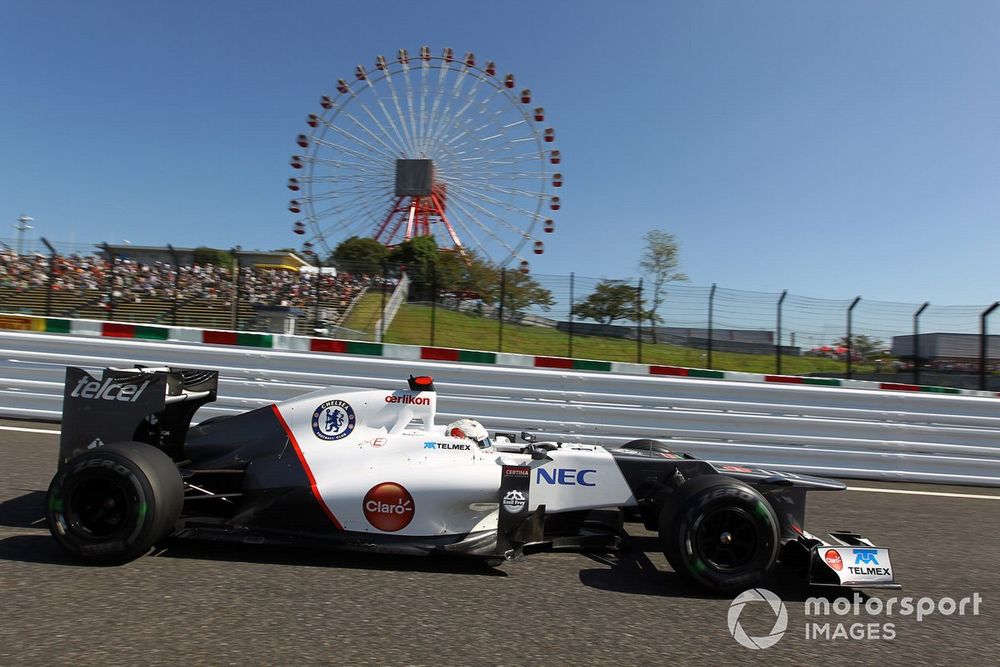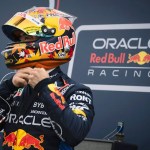It‚Äôs been a very long time since a Japanese driver had a seat at a high group, not to mention a correct high group. When Satoru Nakajima drove for Lotus in 1987 and 1988, it was in the midst of a decade-long decline; in 2004 Takuma Sato completed on the rostrum within the US GP at Indianapolis, however his BAR group didn‚Äôt register a victory that season. Now Yuki Tsunoda finds himself in that one-of-a-kind place ‚ÄĒ and with the extra strain and scrutiny of creating his first race look for that group in his house grand prix.
Within the 50 years since Hiroshi Fushida grew to become the primary Japanese driver to qualify for a grand prix, 17 others have made it to the grid with various levels of success. Tsunoda, the nineteenth Japanese F1 driver to enter the fold, and is probably the strongest candidate to date. Whereas Nakajima had his critics, and was recurrently outpaced by Lotus teammates Ayrton Senna and Nelson Piquet, he drove from the again of the grid to fourth place in wretchedly moist situations in Australia in 1989, setting quickest lap alongside the best way, simply hours after being knowledgeable his mom had died. However it was different Japanese drivers in additional humble equipment that offered considered one of F1’s fascinating statistical quirks: of the three podiums scored by Japanese races, two have come on house soil.  Let’s check out these two sincerely particular moments which absolutely fueled one of the crucial passionate fanbases in F1. 
Japan 1990: Aguri Suzuki is available in beneath the radar
Nelson Piquet, 1st place, celebrates on the rostrum with first-time podium finishers Roberto Moreno, 2nd place, Aguri Suzuki, third place (on the far proper)
Photograph by: Motorsport Photographs
It‚Äôs unlucky for Aguri Suzuki that the 1990 Japanese Grand Prix isn’t remembered as the primary time a Japanese driver stepped onto the rostrum. One other occurence commanded the headlines that day: Ayrton Senna taking out Alain Prost on the first nook.¬†The day started with Senna annoyed that his pole place had not been moved to the clear facet of the observe (FIA president Jean-Marie Balestre reversed a choice by the stewards to maneuver it). With that set, he was then decided to make sure Prost wouldn’t attain the primary nook within the lead, it doesn’t matter what. Mission achieved ‚ÄĒ Senna secured the title, however at a value of furthering these chaotic ripples all through the remainder of the sector.¬†With the 2 title contenders out of the race, the present went on. On the second lap, Gerhard Berger ‚Äď Senna‚Äôs teammate and the brand new race chief ‚Äď made a mistake on the first nook, skidding on dust and gravel left from the Senna-Prost collision. He must retire.¬†This left Nigel Mansell, Prost‚Äôs teammate, in management, forward of the Benettons of Nelson Piquet and RRoberto Moreno, the Williams automobiles of Thierry Boutsen and Riccardo Patrese, the Lotus of Derek Warwick, and Suzuki within the Lola-Lamborghini entered by Le Mans winner and ex-F1 driver Gerard Larrousse. Suzuki rapidly handed Warwick to maneuver into the factors (again then, solely the highest six drivers scored) by lap seven.¬†On this period Goodyear provided tyres to many of the grid and supplied a household of 4 completely different dry-weather compounds. Usually Benetton ran a compound one step more durable than the remainder and deliberate to not cease for brand new tyres, a method facilitated by the relative lightness and decrease energy of the B190‚Äôs Ford V8 engine.¬†Mansell subsequently pushed as arduous as he may to construct a 10-second lead earlier than pitting for brand new tyres on lap 26. Desirous to minimise time loss within the pits, he mashed the throttle as quickly as his automobile got here off the jacks, spinning up the rear wheels so fiercely it snapped a driveshaft. Mansell was pressured to retire, which additionally meant his Ferrari group misplaced the constructors’ championship for McLaren.¬†This put Piquet within the lead ‚ÄĒ 4 seconds forward of teammate Moreno, and 12 seconds forward of Patrese. All Piquet needed to do was handle his automobile ‚ÄĒ a job nicely inside the three-time world champion‚Äôs wheelhouse. Suzuki, in the meantime, had modified tyres and lay in fourth place, almost 20 seconds behind Patrese.¬†¬†However the hole was closing, and the Williams driver was additionally anticipated to make a pitstop.¬†Patrese duly headed for the pitlane on lap 37, elevating Suzuki and his Larrousse to a podium place. Rigorously managing his gas consumption ‚Äď following directions displayed on his group’s pit board to keep away from operating out ‚Äď Suzuki calmly held off the recovering Williams to safe the first-ever Method 1 podium for a Japanese driver.¬†This second was not misplaced on the gang, which roared with approval. The underrated Nakajima added an extra spritz to the celebrations by ending sixth in his Tyrrell.
Japan 2012: Kamui Kobayashi’s Nearly Uneventful Triumph

Kamui Kobayashi, Sauber C31
Photograph by: Sutton Photographs
Kamui Kobayashi had already finished the heavy lifting on Saturday at Suzuka, qualifying his Sauber in fourth place. However he did so beneath the shadow of a stewards‚Äô investigation, having set his quickest time whereas yellow flags have been waving on the Spoon Curve to cowl Kimi Raikkonen‚Äôs Lotus, which had spun off.¬†To his rivals‚Äô chagrin, Kobayashi was let off on account of him going no quicker than earlier than via the precise sector the place the yellow was being proven. Not solely that, he was promoted to 3rd when McLaren‚Äôs Jenson Button was penalised 5 locations for a gearbox change.¬†¬†Though calendar modifications meant the Japanese Grand Prix was not the final or penultimate spherical of the season ‚Äď it was race 15 of 20 ‚Äď the stakes remained excessive in a carefully contested championship. Seven completely different drivers had gained the primary seven rounds of the season and Ferrari‚Äôs Fernando Alonso had a 29-point lead regardless of not having the quickest automobile.¬†At race begin, the virtually inevitable first-corner shunt was much less dramatic than the one which helped begat Aguri Suzuki‚Äôs podium end greater than 20 years earlier in 1990, but it nonetheless included two of the championship’s protagonists. Alonso was eradicated on account of contact with Kimi Raikkonen‚Äôs Lotus.¬†Kobayashi, although, was already up the highway, having made a wonderful getaway to fit between the Crimson Bulls of polesitter Sebastian Vettel and Mark Webber. The Australian (Webber) was sluggish sufficient away from his grid spot to trigger the sector to collide into the second flip, the place he was bundled off-track by Raikkonen‚Äôs teammate, Romain Grosjean.¬†This considered one of a number of incidents which prompted Webber to label Grosjean a ‚Äúfirst-lap nutcase‚ÄĚ.¬†Holding second place, Kobayashi spent the race resisting immense strain from Button, who had rapidly recovered and was now in podium rivalry after the opening-lap chaos. After each drivers accomplished their pitstops, they rejoined in the identical order however misplaced time behind slower automobiles. The one remaining Ferrari, pushed by Felipe Massa, executed a well-timed technique with an extended first stint, permitting him to rejoin forward of Kobayashi on lap 18.¬†Within the closing laps, Button‚Äôs mounted heavy strain, however Kobayashi made no errors and crossed the end line simply half a second forward of the 2009 world champion. This crowd-pleasing second was each the final F1 podium for a Japanese driver and the final for Sauber.
Learn Additionally:
On this article
Fabien Gaillard
Method 1
Be the primary to know and subscribe for real-time information electronic mail updates on these subjects
Subscribe to information alerts










